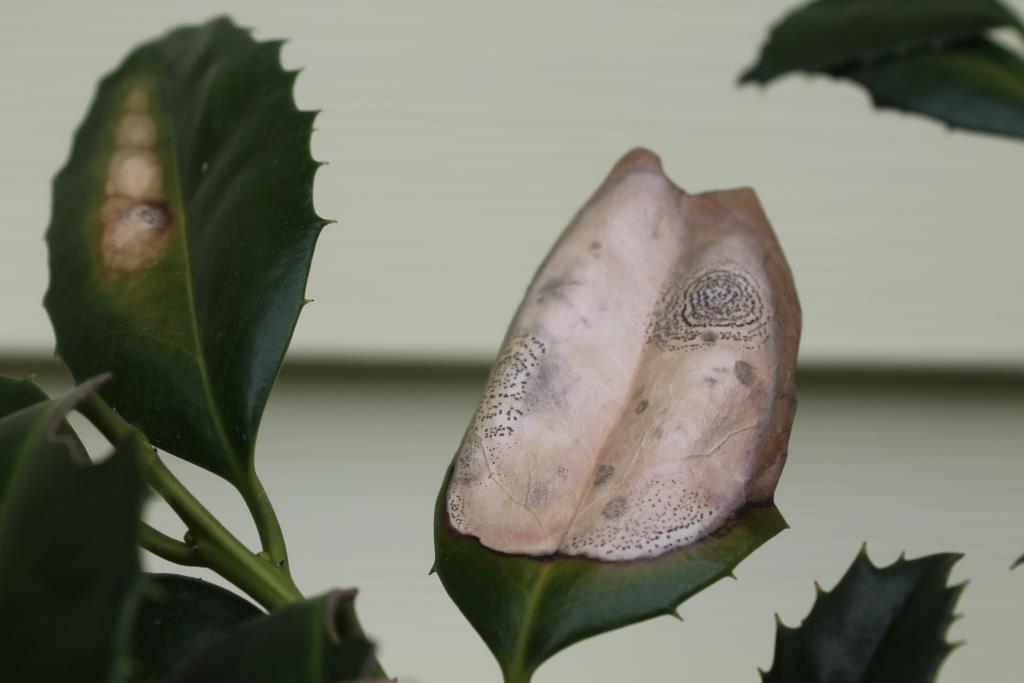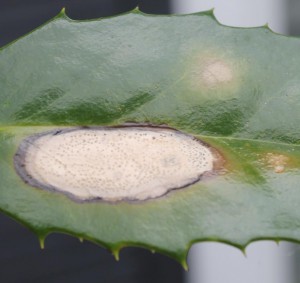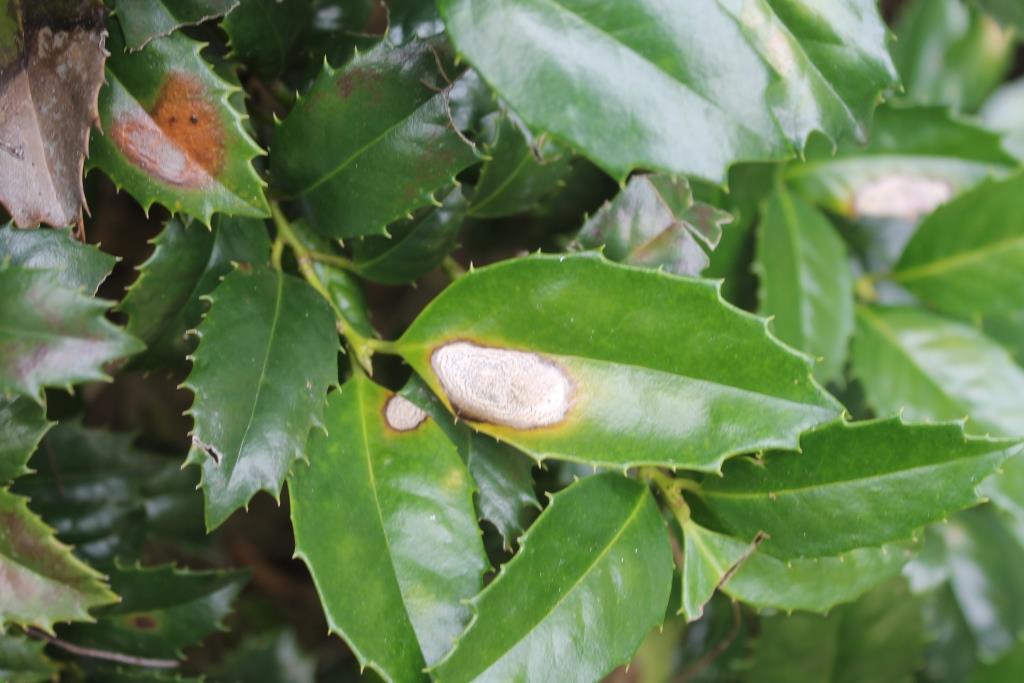The high humidity experienced in the Florida Panhandle during July and August has provided perfect conditions for fungal disease development on the leaves of a variety of ornamental species. One particularly noticeable pathogen is Phyllosticta. Fungi of the Phyllosticta spp. often cause large brown lesions on ornamental shrubs and trees such as magnolia, holly, Indian hawthorn, maple, crape myrtle and others. This dark to light brown spots are bordered with maroon, black or yellow rings, dividing the living and dead tissue. Black fruiting bodies, about the size of a pinpoint, are often spread throughout the diseased areas of the leaf. Infected portions of the leaf often drop out, leaving ragged remnants on formerly attractive shrubs.
Although preventative fungicides have been shown to reduce disease incidence, infected plants cannot be cured by sprays. Several mechanical strategies should be put into practice to reduce disease re-occurrence.
- Sanitation: Removal of leaf litter – Dead, diseased leaves contain the fruiting bodies, which will produce new fungal spores if left in the garden
- Thinning of branches – areas with poor air circulation are more prone to Phyllosticta
- Drip irrigation – overhead irrigation enhances the spread of a variety of fungal diseases. If overhead irrigation must be used, it should be done between 5 – 10 a.m.
For additional information about this and other disease, please go to the UF/IFAS U-Scout disease ID site.
- Woodland Pinkroot Adds Vibrant Color to Spring Landscapes - April 27, 2023
- Easy Care Roses for the Gulf South - April 20, 2023
- Herb Gardening: When Oregano is Flavorless - March 9, 2023



